-
1)Ceramide and cancer metastasis
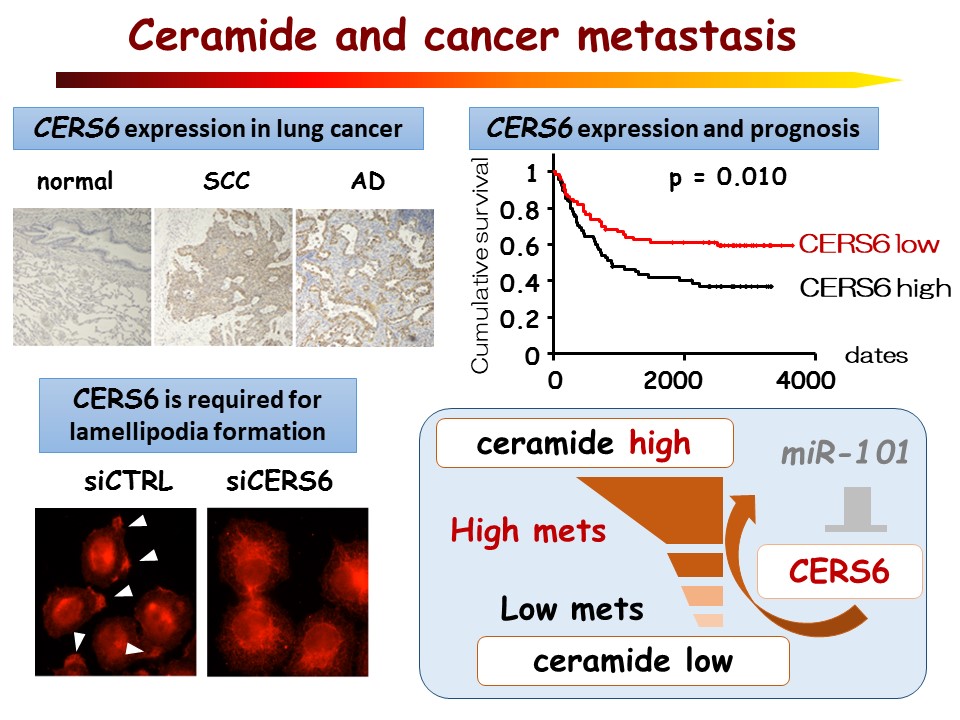
Sphingolipids contribute to unique biological properties, though their
functions in cancer pathogenesis are largely unknown. Our analysis of 149
NSCLC specimens and 16 cell lines showed that under the tumor-suppressor
miR-101 control the ceramide synthase gene CERS6 was overexpressed and
associated with invasion, and that in lung cancer cells CERS6 promotes
metastasis through lamellipodia formation. Targeting CERS6-dependent sphingolipid-metabolic
homeostasis may provide a novel therapeutic strategy for NSCLC.
-
2)POLD4 and genomic instability in lung cancer
In examinations of 158 lung cancer specimens, cell cycle- and checkpoint-related
genes generally showed mRNA expression increases in lung cancer, whereas
POLD4, which encodes the smallest subunit of pol delta complex, showed
reduced mRNA in SCLC and a portion of NSCLC patients. In the reduced expression
of POLD4, the pol delta complex exhibited an impaired in vitro DNA synthesis
activity, delay in cell cycle progression and activation of checkpoint
proteins, elevated frequency of chromosomal gap/break formation, as well
as altered activity in DNA repair. We suggest that frequent occurrence
of reduced expression of POLD4 plays a role in genomic instability in lung
cancer.
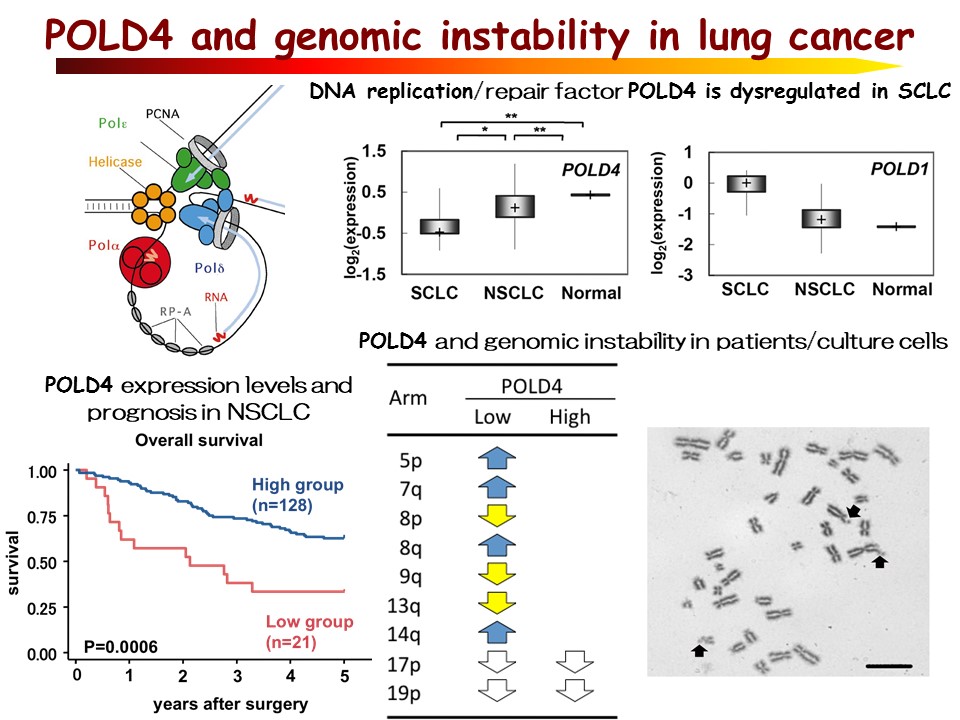
-
3)Cancer initiating cells and cancer treatments
Cancer initiating/stem cell hypothesis may push us for radical re-consideration
in cancer pathology and treatments. For example, if conventional chemotherapy
targets only non- cancer initiating/stem cells, survived cancer initiating/stem
cells may revive and cause recurrence. We are under attempt to identify
factors that promotes cancer stemness and to develop novel cancer treatment
strategies.
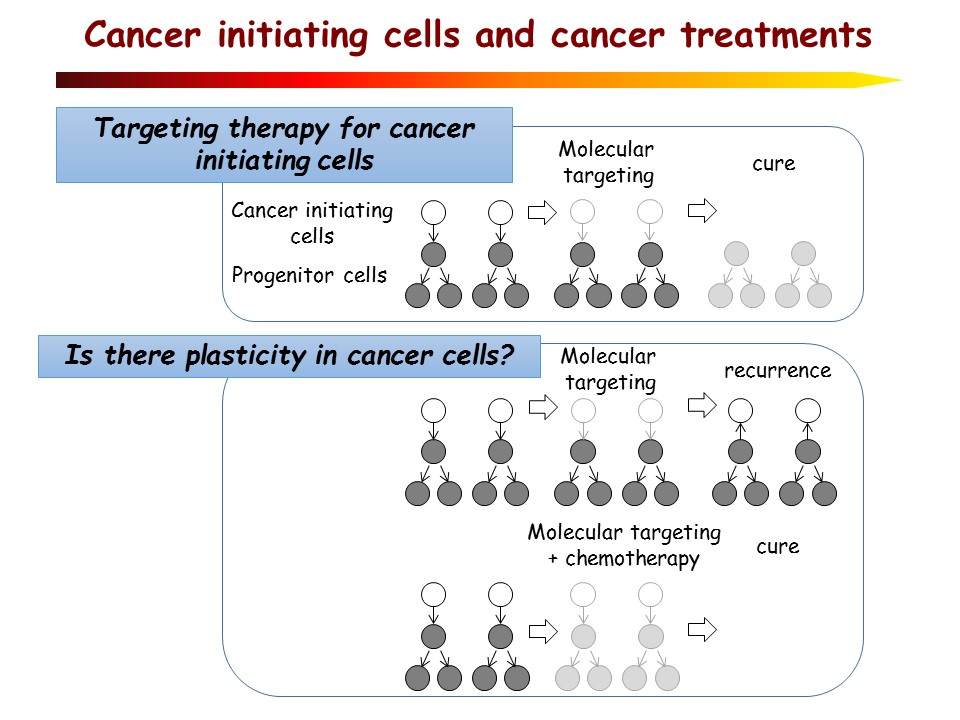
-
4)DNA damages by heavy-ion irradiation
Heavy-ion radiotherapy may be of potential in treatment of X-ray-resistant
tumors, underlying mechanisms, i.e., how it is associated with this high
efficacy, is largely unknown though. We have shown that it frequently induces
widespread DNA damage at ‘chromosome boundaries’. The same dose X-ray irradiation
is found with less effect. Thus heavy-ion radiotherapy may cause irreversible
and mortal chromosomal damages more efficiently than X-ray, and comes up
with the strong cell-killing effect.
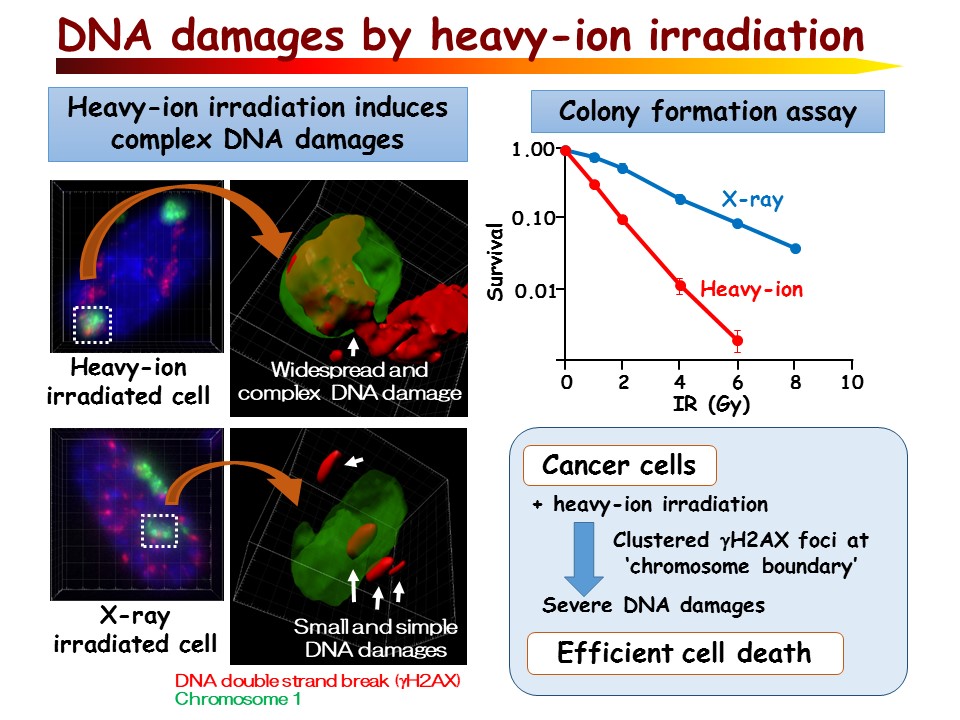
-
5)Disease-associated antigens
Dense plasma cell infiltration is commonly observed in chronic inflammatory
diseases and malignant tumors. However, antigens produced by these plasma
cells remain unidentified. We have developed an immuno-histochemical strategy
to determine the target antigens in tissue sections. Our method provides
the pathophysiological information that underlies types of diseases.
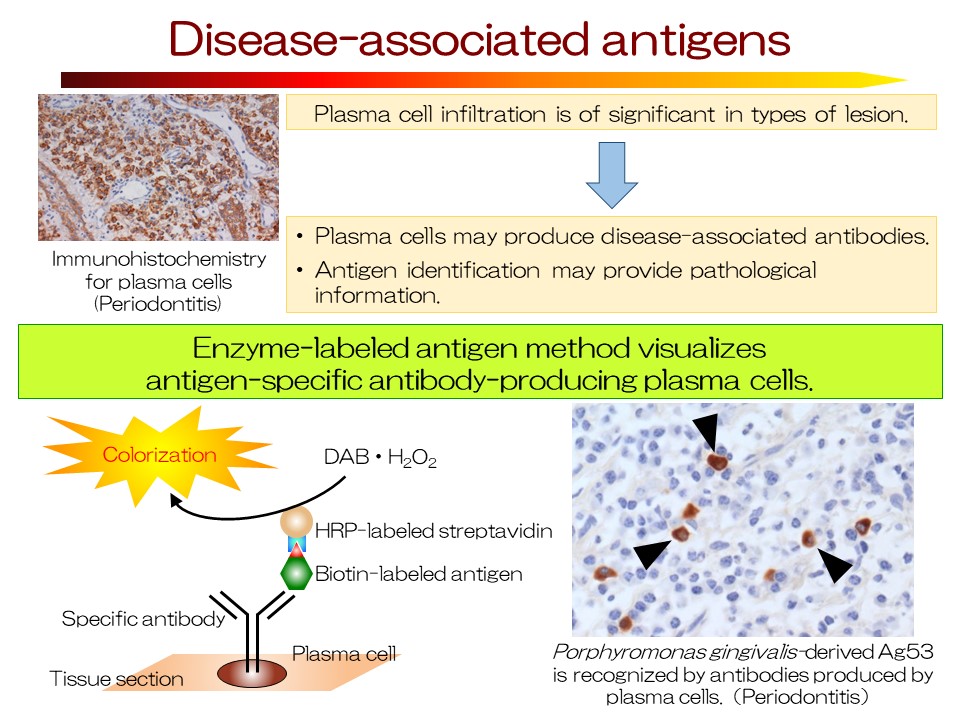
Contact information
Phone:+81-562-93-2440
e-mail:motosuzu*fujita-hu.ac.jp(In case of e-mail, please change * to @)
Address:1-98, Dengakugakubo, Kutsukake-cho, Toyoake-city, Aichi, 470-1192,
Japan
